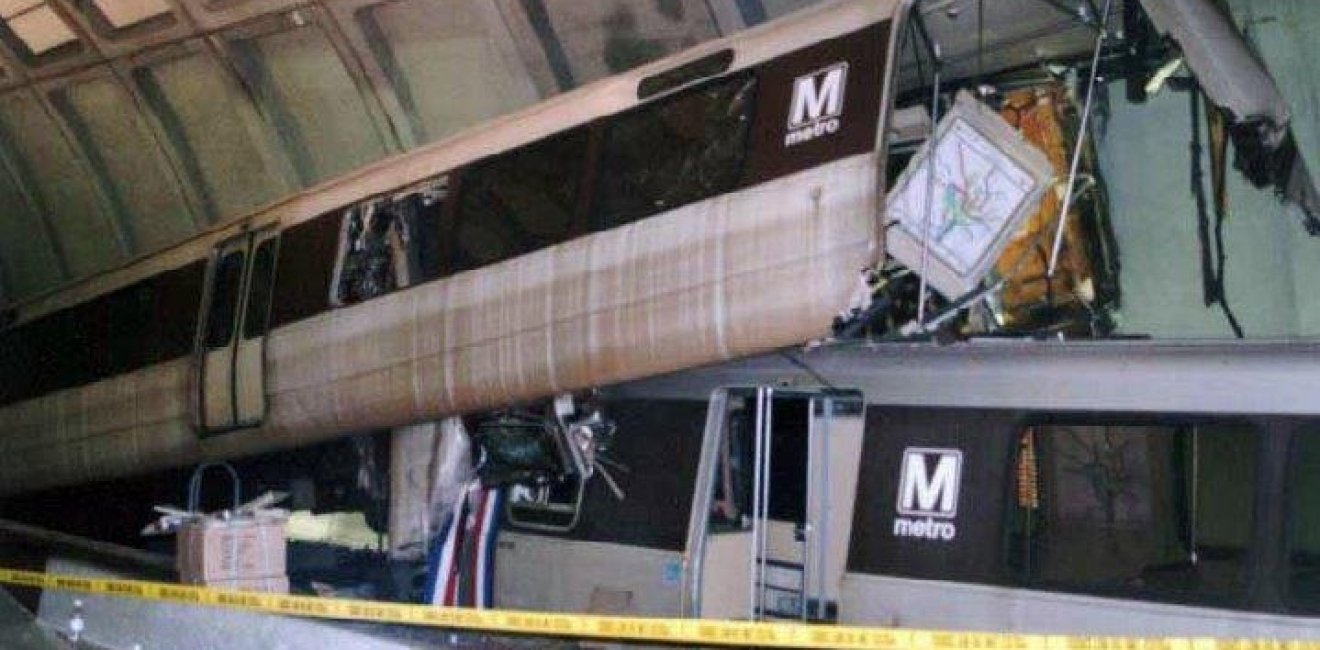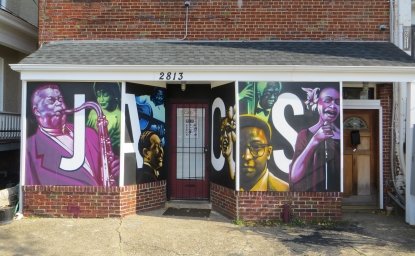I didn’t ride the Washington Metro the day it opened in March 1976. I waited for the crowds to abate before I shuttled back and forth in the Red Line between Farragut North and Union Station for the first time.
I did ride the Blue Line on its opening day in July 1977, and was off-loaded due to a “disabled train” for the first of too many times to count. The engineers, it seems, had scrimped on the specifications for the metal used supporting the car floor. Not anticipating high ridership, they chose flooring that bent under the weight of a crowded train. This malleability, in turn, prevented the car doors from closing. Little did I realize just how much this failure was a precursor of things to come.
Meanwhile, I eagerly awaited each new line as the original 101 mile system map filled in with bright solid colors. The Metro was transforming Washington, making it feel more and more like the cities that had shaped my life before – New York, Toronto, Moscow and Leningrad. Within a couple of decades, the Washington Metro had garnered the second largest ridership of any transit system in the country. With each new line, politicians would gather, smile, and cut a ribbon proud of the expanding Metro empire. Meanwhile, behind the scenes, they ruthlessly slashed maintenance budgets. Among their early choices, the custodians of the public trust operating Metro decided to shut down its internal escalator repair service in favor of contractors. Within a few months, broken escalators would become an iconic symbol of the increasingly dysfunctional system.
With a jerry-built governance structure and an absence of a secure funding source, amplified by a culture mocking transparency and accountability, Metro could well have been programmed for failure from the outset.
As the lines opened, Metro began purchasing new cars. Sometimes, someone got the design and inspection wrong and cars would break down with unknown frequency. Other times, the procurement process dragged on for years. At all times, disabled cars delayed increasingly frustrated passengers with growing regularity. The signs of decay, malfeasance, and mismanagement became increasingly unavoidable as the system crumpled in open view. Farce turned to tragedy as passengers began to die in accidents that should have been avoidable.
Robert McCartney and Paul Duggan recently published a slashing exposé of ineptitude on the front page of The Washington Post, “Metro at 40: A Mess of its own making” (April 25, 2016). “‘America’s subway’,” they write, “which opened in 1976 to great acclaim – promoted as a marvel of modern transit technology and design – has been reduced to an embarrassment, scorned and ridiculed from station platforms to the halls of Congress.” After reviewing thousands of pages of reports issued over the past half-century – amazingly issued even before the system began operations – the writers reveal that Metro’s problems began from the very beginning.
With a jerry-built governance structure and an absence of a secure funding source, amplified by a culture mocking transparency and accountability, Metro could well have been programmed for failure from the outset. Incredibly inept managerial decisions nonetheless accelerated decline.
Believing that technology would solve problems beyond its own design capabilities, managers and employees simply became lazy; relying on machines to send off alarm bells rather than trusting their own eyes and ears. Politicians poured money into new lines while short-changing the sort of routine maintenance that is required to keep trains running, escalators climbing, and lightbulbs burning.
Unbelievably, those in charge couldn’t even spend the money they had. From 2001 to 2015, McCartney and Duggan report, Metro spent only $3.7 billion of the $5.1 billion budgeted. Gross safety violations are still uncovered even after the federal government sent in teams of inspectors. Fundamentally, individuals at every level of the Metro system act as if they are completely unaccountable for their actions.
Meanwhile, expert commissions, consultants, and ponderous reports identified with mind-dumbing regularity the same failures. With callous disregard for the public, far too many Metro managers and employees stumbled on in a no-fault world punctuated by fear among those who knew that they would be punished for speaking up. Those with responsibility for the system sat by, failing to respond as every Metro ride held out the unfortunate promise of becoming an unexpected adventure.
Back in the 1990s, I sat through more than anyone’s fair share of lectures by American “experts” admonishing Russian and Ukrainian public officials on the dangers of inadequate information sharing, scanty public consultation, and unaccountability in public management. My Russian and Ukrainian colleagues frequently concluded that the visiting Americans were preaching sermons that they themselves did not observe.
Local Russian and Ukrainian officials came to loathe American advice even as they acknowledged the merit of the actual proposed measures. “How can you Americans constantly tell others what to do when for you it is all just a game?” one Russian city council member once asked me.
I now know what my response should have been; I should have recommended that all those American experts and consultants return home and do all that they could to clean up our own house. If only they had perhaps Russian-American relations would have improved, and Ukrainian public officials might listen more to our sermons about the evils of corruption. Perhaps I might have been able to rely on an on-time trip home with regularity.
But this didn’t happen. When it comes to Washington Metro, the transparency and accountability that sustain efficient and effective public services won’t just come about without more than a push. After McCartney and Duggan’s article, we all know that every tough question that has needed to be raised has been asked on numerous occasions. Until and unless those with custodianship take full responsibility for their actions – has anyone in management or in line operations, for example, ever been disciplined for past accidents leading to passenger fatalities? – the Washington Metro isn’t going to even begin to improve.







